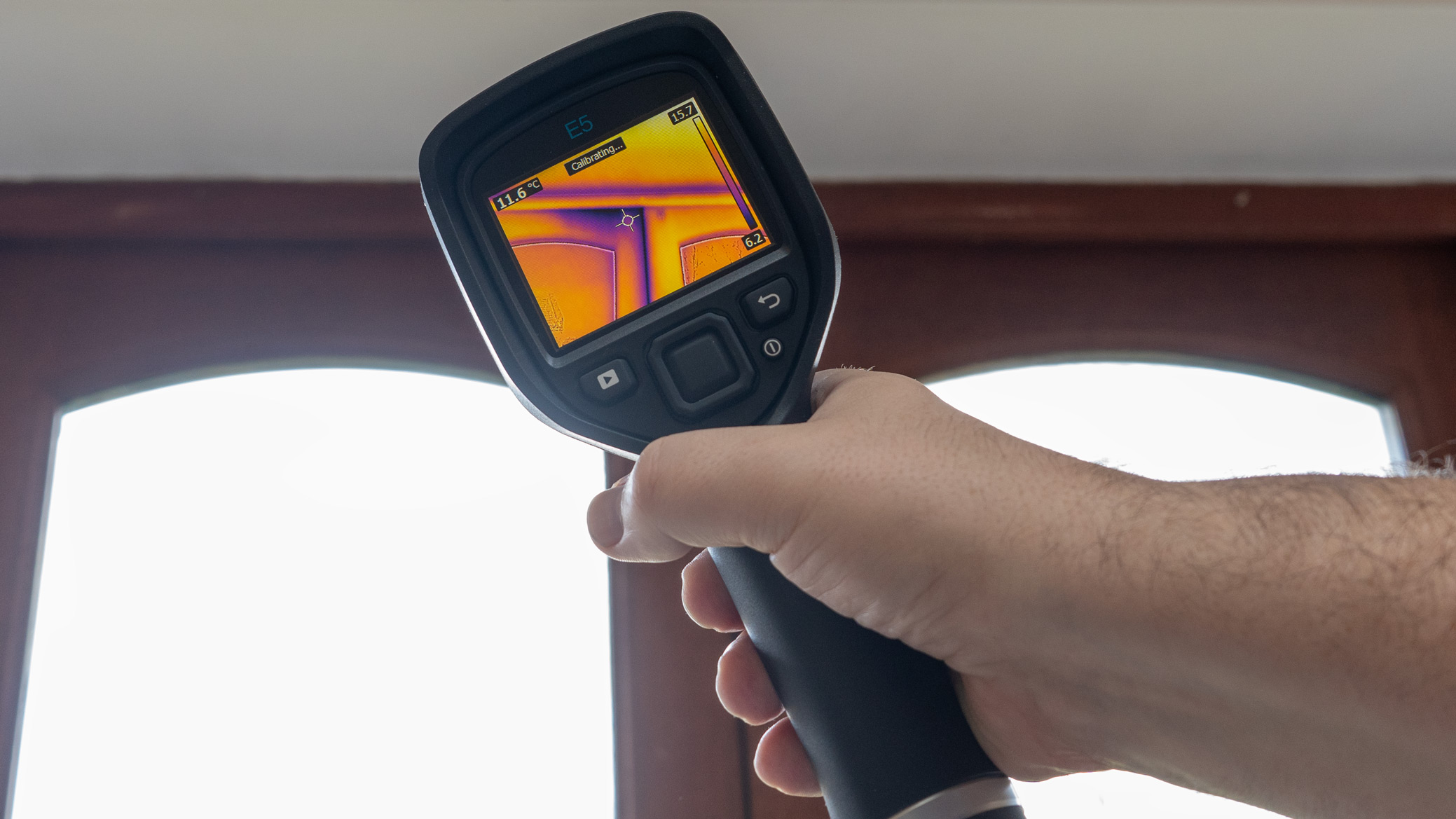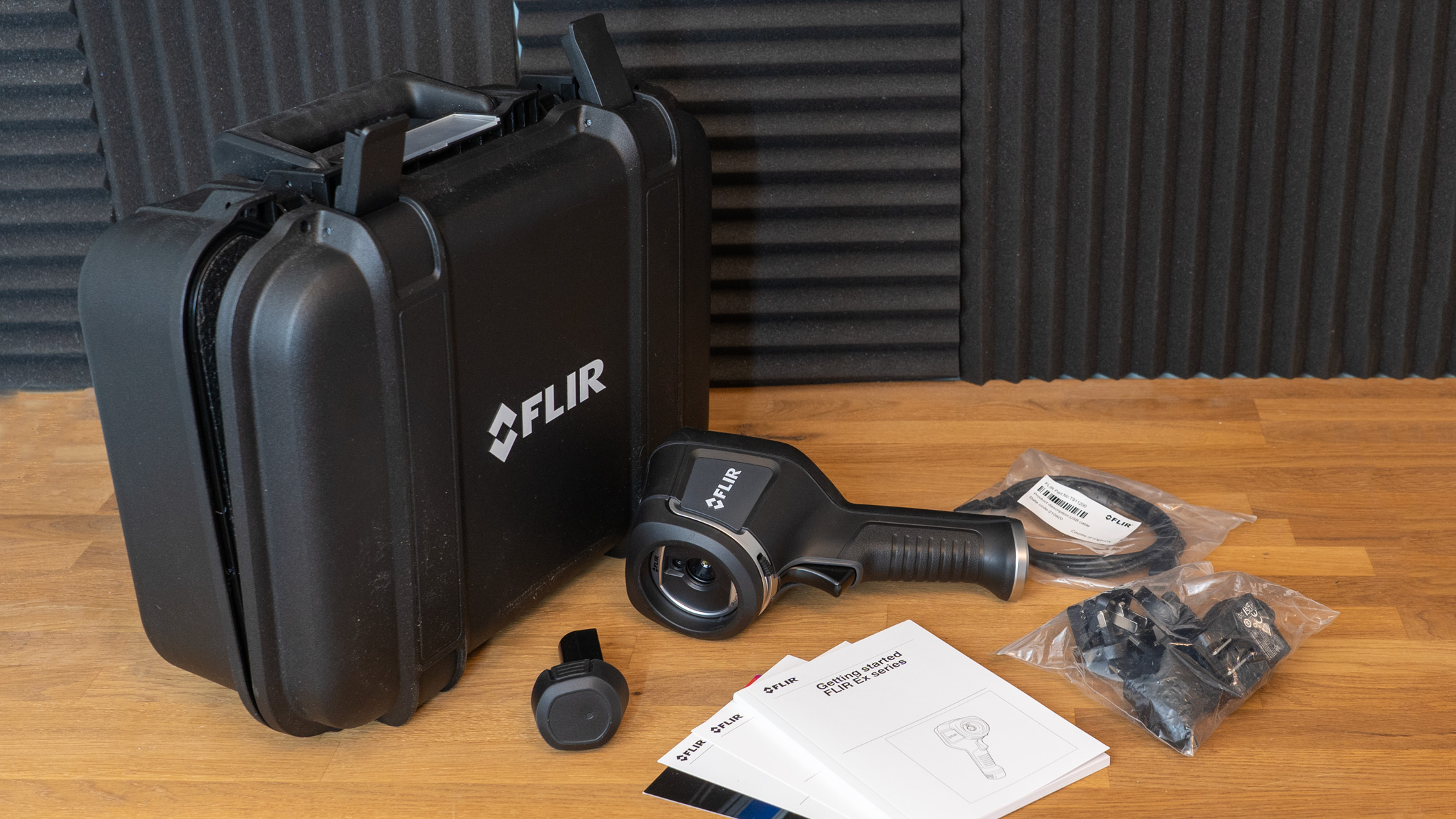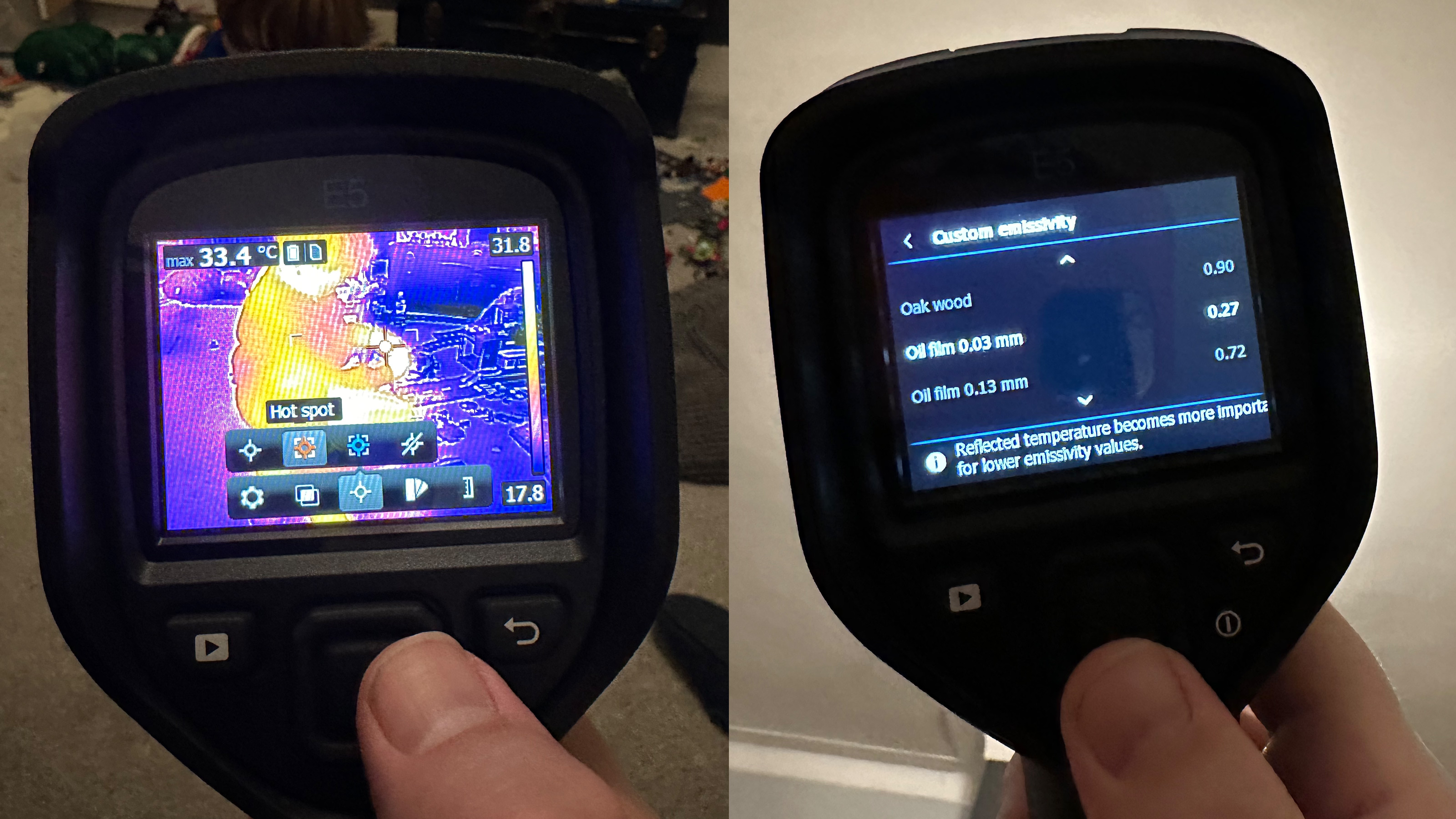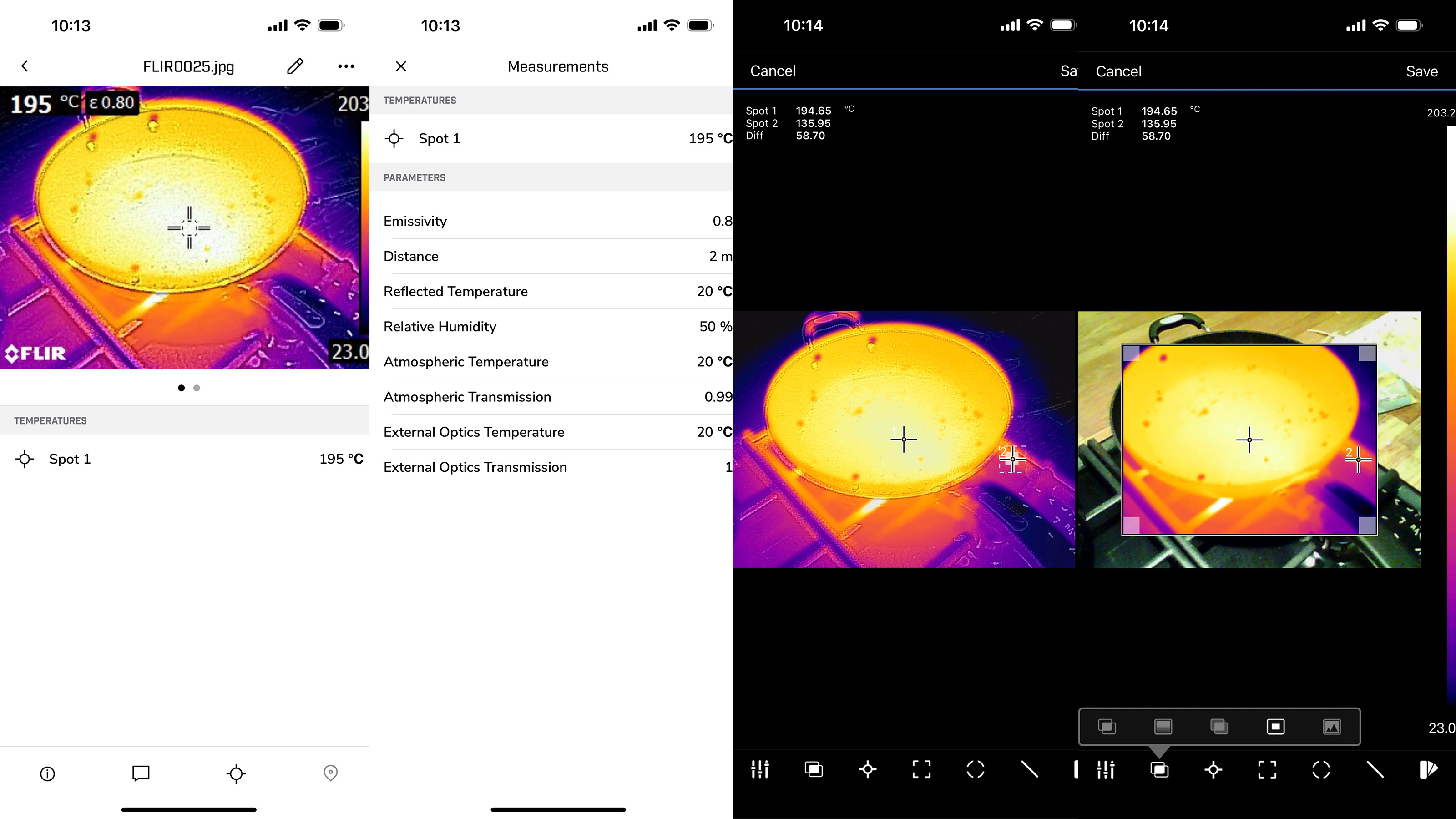Digital Camera World Verdict
While there are other devices out there that feel like better value, and there are certainly more modern ones, the FLIR E5-XT’s build quality and adequate – if not impressive – storage and wi-fi features are well equipped for most pros. The app also offers extensive options for taking readings, averaging, and exporting which pull the rating up.
Pros
- +
Easily understood ‘MSX’ hybrid thermal images
- +
Rugged design with built-in lens guard
- +
160 x 120 thermal resolution
- +
Replaceable battery
- +
App allows detailed examination
Cons
- -
Significant investment
- -
No access to FLIR Ignite cloud
- -
Micro-USB charging port feels old-school
- -
Storage (circa 1000 images) smaller than some
Why you can trust Digital Camera World
Teledyne now owns FLIR, a leading brand in thermal-imaging cameras calling themselves ‘the world’s sixth sense.’ This device, however, pre-dates that acquisition, but regardless of company politics FLIR’s extensive thermal offerings include phone attachments (see our FLIR ONE Edge review), compact cameras (see our FLIR C5 review), and professional tools.
That means each series has a specific customer group in mind, and if you’re looking at this rugged, trigger-grip design we’d imagine you’re looking at using it in some tough situations – and fairly frequently too.
This product is designed with on-site usage in mind, so incorporates some aspects of the Wi-Fi and reporting software seen in other FLIR devices, but not the cloud services. It is also not FLIR’s latest, so the question is does it justify the price?

FLIR E5-XT specifications
Thermal resolution: 160 x 120
Thermal range: -20˚C to 400˚C (-4˚F to 752˚F)
Optical Resolution: 5MP
Field of view: 45˚ x 34˚
Connectivity: Optional Wi-fi 802.11 a/ac/b/g/n 2 & 5GHz
Size: 244 × 95 × 140 mm (9.6 × 3.7 × 0.55 in)
Weight: 575g (1.27 lb)

FLIR E5-XT build & handling
Even before you get to the E5xt the packaging – a hard plastic travel case with foam inserts – you know this is built for a tough environment. In the hand that feels just true; almost the whole body (and all the points which might need to absorb drop damage) are rubberized. We’re sure the drop-test claims are true.
The relatively vulnerable Micro-USB charging and image download port are in the top, behind a large rubber protector, while the bottom of the battery forms the bottom of the handle and is also rubberized, so the overall IP54 rating seems warranted.
The 3-inch screen is clear and bright, though 320x240 resolution won’t compete with a modern display. Images can be reviewed easily, or transferred by wi-fi or the USB. To capture you’ll need to make a decisive press of the trigger. Other buttons also require a solid but not excessive push and have firm clicking microswitches. Oddly, though, overall it still feels lightweight; not cheap, but easy to move around.

FLIR E5-XT performance
Accuracy is ±2˚C (3.6˚F) or ±2% in a normal ambient temperature, which is better than many. It is quickly thrown off by a low ambient though, as our freezer test found, but FLIR never claimed otherwise. The sensitivity of 0.1˚C is impressive.
Interestingly, while the resolution matches FLIR’s newer consumer devices, the field of view is narrower – just 45˚ horizontal – so it is easier to get a distance reading which makes sense in a professional environment.
We tested the wi-fi edition of the camera, though it must be said that the wi-fi wasn’t as straightforward as we’d have liked, or as feature-rich as newer devices. The first time we turned it on, wi-fi didn’t even appear as an option on the menu. After a reset, it was there, but finding it on our phone wasn’t handled by the app, and necessitated diving into the Wi-Fi Settings page which – while not too taxing – feels a bit old-school.

The app, FLIR Tools, didn’t share data with the FLIR Ignite – the cloud platform seen on more recent FLIR devices. It did, however, allow images to be reviewed next to their optical equivalents, and additional spot measurements taken after the fact. The remote shutter was a nice touch too, with some interesting possibilities.

FLIR E5-XT Verdict
The FLIR E5-XT is a rugged and effective thermal imaging camera, and we’d recommend it to someone working long days in a tough environment looking to capture readings, but not without some reservations. The MSX hybrid images are easy to read for the most part – though the optical camera could be of better quality.
The internal tech feels a little antiquated now, with not least 180Mb storage (circa 1000 hybrid images). The Wi-Fi’s ease of use and lack of FLIR’s cloud options and a Micro-USB charging socket are also clues. A vague wish would be a range finder to automatically check the distance and align hybrid images; it’s easy to forget this setting.
Despite all this, the device sits between the cheap mystery brands and pricey higher resolution devices and does a good job in a way we’d be happy to depend on, whether as an electrician, HVAC engineer or in the workshop.

With over 20 years of expertise as a tech journalist, Adam brings a wealth of knowledge across a vast number of product categories, including timelapse cameras, home security cameras, NVR cameras, photography books, webcams, 3D printers and 3D scanners, borescopes, radar detectors… and, above all, drones.
Adam is our resident expert on all aspects of camera drones and drone photography, from buying guides on the best choices for aerial photographers of all ability levels to the latest rules and regulations on piloting drones.
He is the author of a number of books including The Complete Guide to Drones, The Smart Smart Home Handbook, 101 Tips for DSLR Video and The Drone Pilot's Handbook.

